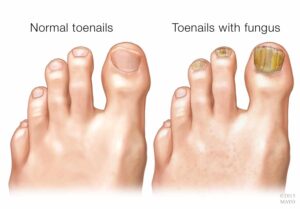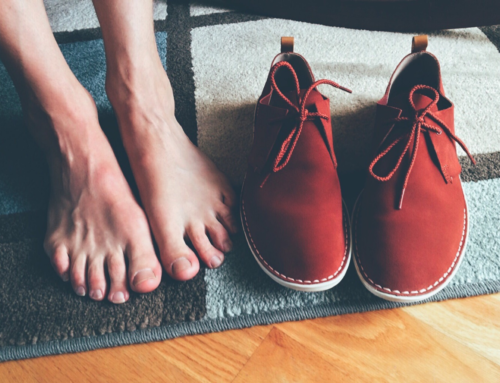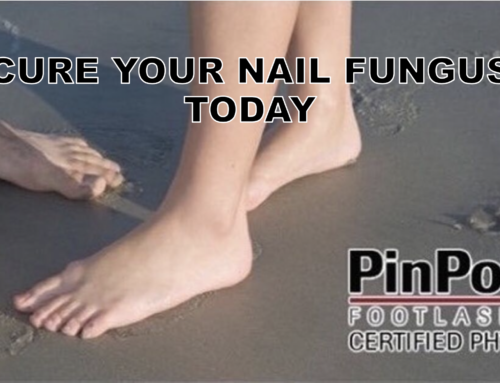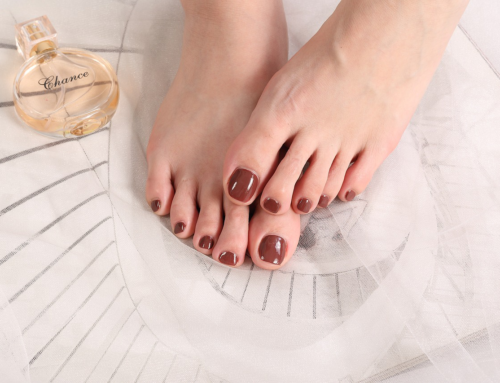Don’t bleach your toenail fungus! Bleach is a cleaning chemical that has been designed to disinfect and clean surfaces with hardened grime and bacteria. On the internet, there are some recommendations for this dangerous chemical to treat toenail fungus. The application of bleach to the toenails is one of the DIY “home remedies” for toenail fungus recommended online. DIY home remedies for fungus are actually often worse than leaving the condition alone. Many of them can make the fungal infection worse. They are also very unlikely to actually treat the toenail fungus effectively.
Reasons to stay away from bleach
Bleaching fungal spores under the nail can seem appealing. Bleach is a treatment made for cleaning, and fungal spores can often look like dirt under the nail. Using bleach on the nail seems like common sense; however, it is actually a very bad idea. For one, fungal spores aren’t actually dirt or grime. The things that bleach is effective for cleaning don’t include fungus.
Bleaching fungal infections is actually likely to cause further infection. This is because the toxic chemical can cause chemical burns and wounds in the skin itself. Wounds of this nature are great places for other infections to start. In addition to this increased risk of infection, the damage caused by bleach is likely to be painful and irritating.

Bleach DIYS
If you see a treatment that suggests using bleach on your toenails from a website, you should be careful. Especially medical advice found on the internet. Bleach is only a cleaning product and should never be used as a medical treatment. The labels on the bottle of bleach are there for a reason. These labels always say that the chemical inside is not safe to be used internally or on the skin.
Long-lasting damage to the skin can require repeated medical attention. This is likely when the label instructions for bleach aren’t followed. This is why the label has warning signs and guidelines on it. It is meant to help you understand the dangers. When you are aware of these dangers, it is much easier to avoid them by being very careful. If you use bleach on your toes, the skin will become irritated. Irritation of the skin could worsen the toenail fungus infection. As well as cause more serious health concerns.
Dangers of Bleaching
Bleaching toenail fungus may seem effective because the chemical is a cleaning product. The misconception that toenail fungus is caused by dirt is untrue. Despite the change in the aesthetic appearance of the nail caused by the infection, your nails are not dirty.
By bleaching your toes, you’re exposing your skin to dangerous chemicals. These chemicals aren’t designed for medical or topical use and require gloves to handle them safely. As a result, when these chemicals come into contact with the skin, they can cause dangerous reactions and even chemical burns.
Risks of Bleaching for Fungus
Chemical burns are some of the worst damage possible when bleach is applied to the skin. As the skin is exposed to bleach, chemical burns develop. Common symptoms of a chemical burn include redness, irritation, burning, and pain. Severe chemical burns can cause symptoms such as blistering and numbness. If the chemical burn is very severe, it can even cause systemic damage.
Also, bleach will not actually kill the fungus itself. This chemical is not a good antifungal agent. It will not be able to get underneath the nail bed where the fungus is. There are topical solutions available for fungus. Although these are very weak and take years to see any improvement in the toenail fungus. They are much safer than bleach, but are still very ineffective at treating fungus.
Nail Doctor’s Recommendations
No medical professional recommends treating yourself with bleach, since this chemical is not designed for medical treatment. This is a prime example of why it is best to take things you learn on the internet with caution and do your own investigation before coming to conclusions.
Applying bleach to the toes is not only dangerous but ineffective at treating fungal infections. Bleach is not an effective antifungal agent, and won’t do much to cure the condition. For one, bleach won’t effectively penetrate through the nail into the nail bed where the fungus resides. If the bleach can’t even get to where the fungus is, it won’t be able to kill the fungal spores. Additionally, any bleach that does get into the nail bed isn’t very effective at killing it. Bleach trapped under your nail is also a recipe for a chemical burn.
Applying bleach to toenail fungus is one of many proposed “treatments” that can have negative side effects. For example, prescription oral antifungal medications contain compounds that can be very toxic to the liver.
It is during this passage that they can have harmful effects. Using these medications can cause liver toxicity and damage. This is especially dangerous for patients who have pre-existing conditions that affect liver function. Blood screenings for liver functionality are often required for these treatments.
Treatment Options for Toenail Fungus
Aside from home remedies like bleach and topical solutions, there are other prescription medications available for fungus. Consulting with a nail doctor in your area will be the first step towards finally eliminating your fungus. A nail doctor will be able to give you a safe treatment plan. As a result, it will minimize negative effects.
However, not all prescription or medical treatments for fungus are made the same. For example, oral medications for fungus can be very dangerous for the liver. There are medical treatments that are safe for fungus, however. The safest treatment available is also the most effective. This is the PinPointe Laser treatment. This laser only requires one treatment to eliminate the fungus and has no side effects. To learn more about this treatment or schedule a free consultation with a nail doctor, give us a call at 1-(800) 672-0625 or visit our website for more information.





